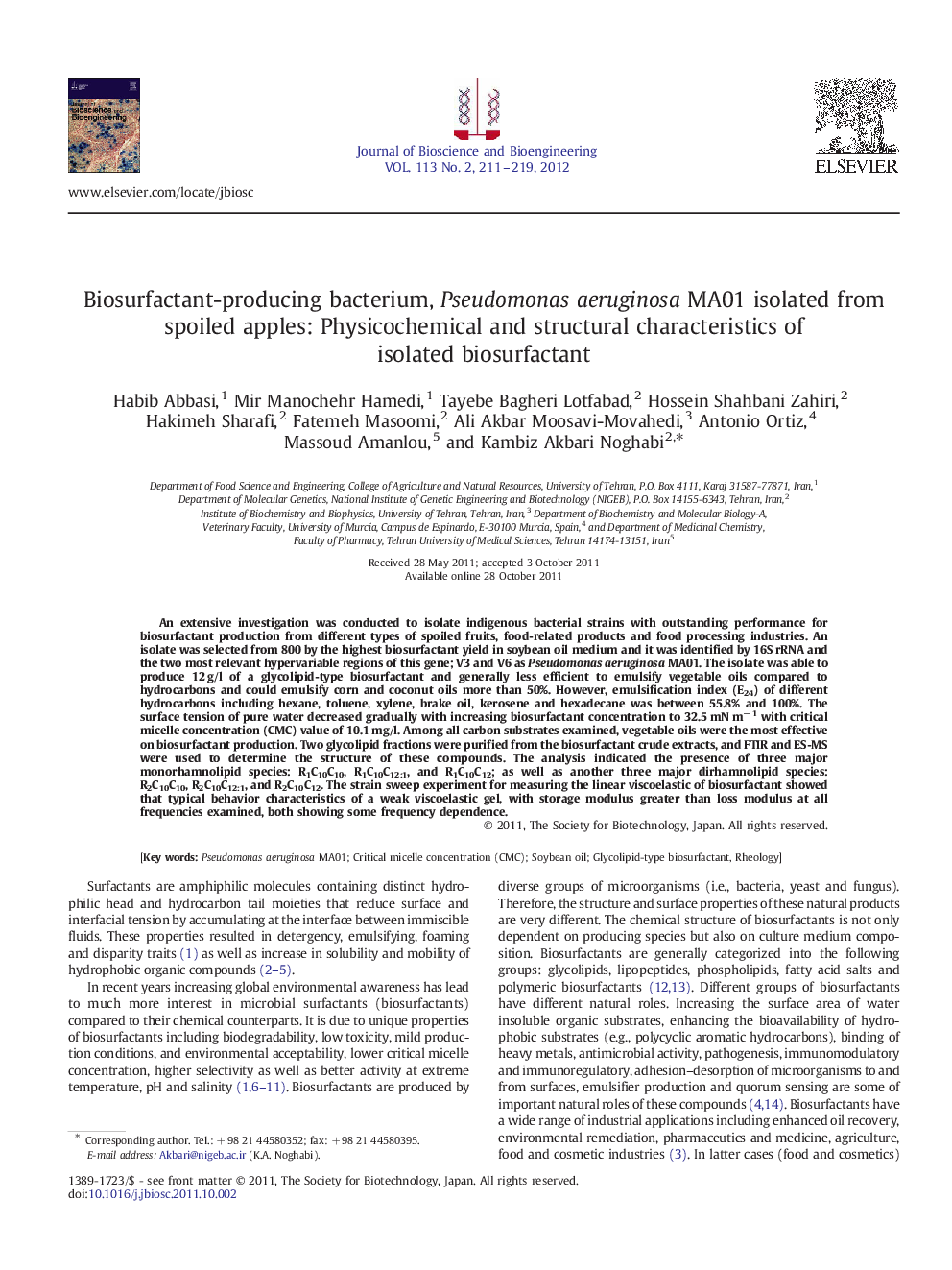| Article ID | Journal | Published Year | Pages | File Type |
|---|---|---|---|---|
| 21379 | Journal of Bioscience and Bioengineering | 2012 | 9 Pages |
An extensive investigation was conducted to isolate indigenous bacterial strains with outstanding performance for biosurfactant production from different types of spoiled fruits, food-related products and food processing industries. An isolate was selected from 800 by the highest biosurfactant yield in soybean oil medium and it was identified by 16S rRNA and the two most relevant hypervariable regions of this gene; V3 and V6 as Pseudomonas aeruginosa MA01. The isolate was able to produce 12 g/l of a glycolipid-type biosurfactant and generally less efficient to emulsify vegetable oils compared to hydrocarbons and could emulsify corn and coconut oils more than 50%. However, emulsification index (E24) of different hydrocarbons including hexane, toluene, xylene, brake oil, kerosene and hexadecane was between 55.8% and 100%. The surface tension of pure water decreased gradually with increasing biosurfactant concentration to 32.5 mN m− 1 with critical micelle concentration (CMC) value of 10.1 mg/l. Among all carbon substrates examined, vegetable oils were the most effective on biosurfactant production. Two glycolipid fractions were purified from the biosurfactant crude extracts, and FTIR and ES-MS were used to determine the structure of these compounds. The analysis indicated the presence of three major monorhamnolipid species: R1C10C10, R1C10C12:1, and R1C10C12; as well as another three major dirhamnolipid species: R2C10C10, R2C10C12:1, and R2C10C12. The strain sweep experiment for measuring the linear viscoelastic of biosurfactant showed that typical behavior characteristics of a weak viscoelastic gel, with storage modulus greater than loss modulus at all frequencies examined, both showing some frequency dependence.
